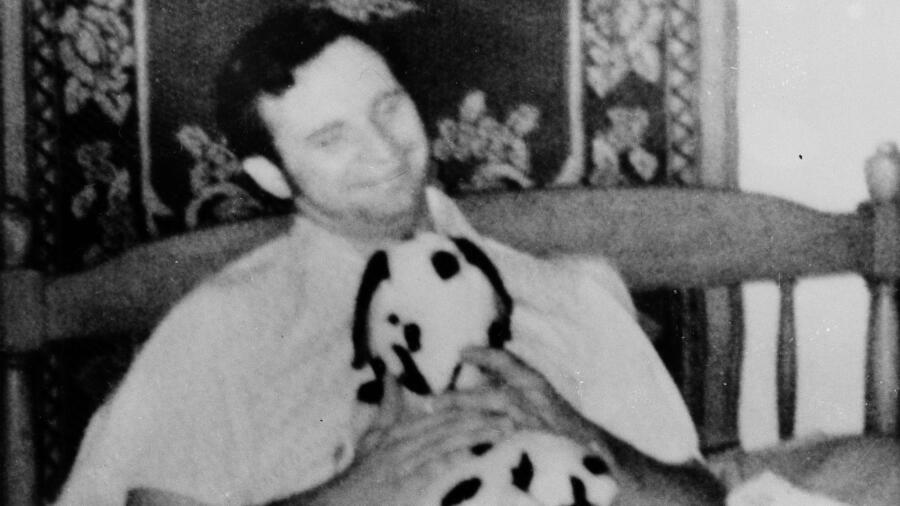“There are more out there.”
— Sgt. David Mullican, former lead investigator on the Houston Mass Murders
It’s been half a century since one of America’s most sadistic serial killers was shot to death—yet the ghost of Dean Corll, the so-called Candy Man, still hovers over Houston like a long, dark shadow.
Known for torturing and killing at least 28 teenage boys, Corll’s story is among the most gruesome in U.S. history. But with one body still unidentified and whispers of more victims buried in forgotten graves, the case is far from closed. And now, investigators are digging—literally and metaphorically—for the truth that still haunts Texas.
The Candy-Coated Lure of Death
Between 1970 and 1973, Dean Corll operated under the radar in Houston Heights, a working-class neighborhood where young boys frequently disappeared, and nobody seemed to notice. His family’s candy business gave him access to kids—and a nickname that would become infamous: The Candy Man.
Behind his friendly smile was a monster. Corll lured boys to his home with promises of parties, alcohol, drugs, and friendship. There, he handcuffed them to a plywood torture board, subjected them to brutal sexual assaults, and eventually murdered them—often with chilling calm.
Accomplices to Atrocity: Elmer Wayne Henley & David Brooks
Corll didn’t work alone. He groomed and manipulated two teenage boys, Elmer Wayne Henley and David Owen Brooks, into bringing him new victims—often their own friends.
“He said he was helping rid the world of runaways.” — Henley’s confession
In 1973, after years of complicity and with Corll turning on him during a failed abduction, Henley shot Corll six times, ending the nightmare—but unleashing a new one as police uncovered body after body, grave after grave, in boat sheds, beaches, and wooded areas.
Houston Mass Murders: The Largest Serial Killing Case of Its Time
What followed was America’s largest known serial murder case at the time. Police eventually uncovered 28 bodies—but law enforcement failed the victims long before they were killed.
Many had been reported missing. Most were dismissed as “runaways.” Few were ever searched for.
“Back then, nobody looked. If a kid vanished, they just assumed he wanted to disappear.”
— Andy Kahn, victims’ rights advocate
Even today, the system’s failure still angers the families who were ignored—and motivates modern investigators to bring the rest home.
Renewed Efforts: 50 Years Later, the Dig Continues
In 2021, nearly five decades after Corll’s death, Texas EquuSearch and founder Tim Miller—whose own daughter was murdered—reopened the search at Corll’s former home in Pasadena.
Although they found animal remains, no human bones surfaced. But the effort was far from fruitless. It rekindled national interest and reinforced the chilling belief: Corll’s true body count is still unknown.
Even Elmer Wayne Henley, now in his 60s and serving multiple life sentences, has agreed to help locate potential burial sites.
“There are more,” he told investigators. “We just didn’t find them all.”
The Unknown Boy: One Victim Still Remains Nameless
Among the confirmed victims lies a single mystery—a boy never identified, found in 1973.
He was wearing:
- Striped Catalina swim trunks
- A khaki USMC shirt with a peace sign
- Cowboy boots
Despite forensic facial reconstructions, his identity remains elusive—a ghost in the morgue, waiting for someone to recognize his face, his clothes, or his absence.
Accomplices Aftermath: Justice in Varying Forms
- David Owen Brooks died of COVID-19 in prison in 2020 after serving 45 years.
- Elmer Wayne Henley remains incarcerated and has participated in multiple media interviews and artistic projects, including prison paintings of his victims—some call it healing, others, exploitation.
Both remain forever entwined with Dean Corll’s legacy of horror—boys turned bait, turned killers.
🧠 Frequently Asked Questions
Who was the Candy Man serial killer?
Dean Corll was a Houston-based predator who raped, tortured, and murdered at least 28 boys between 1970 and 1973. His crimes were dubbed the Houston Mass Murders.
Why was Dean Corll called the Candy Man?
His family ran a candy business, and he often handed out free candy to local children—earning their trust before preying on them.
How was Dean Corll stopped?
One of his teen accomplices, Elmer Wayne Henley, shot and killed him in 1973 during a botched murder attempt.
Are there more undiscovered victims?
Yes. Authorities and Henley himself believe more bodies remain buried in unknown locations. Recent search efforts have reignited the investigation.
What happened to Henley and Brooks?
Henley is still in prison; Brooks died in 2020 from COVID-19. Both were convicted and sentenced to life.
Has every victim been identified?
No. One boy remains unidentified, and officials are still seeking the public’s help to give him a name.

